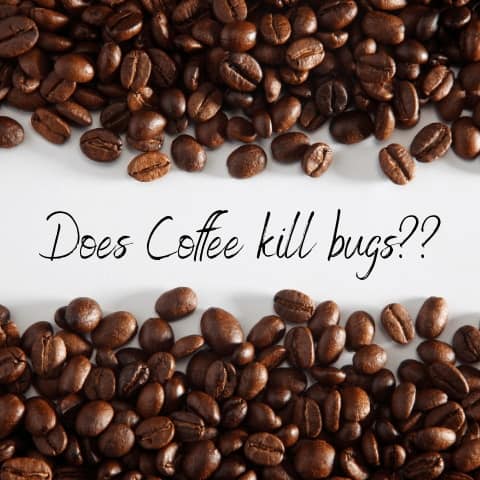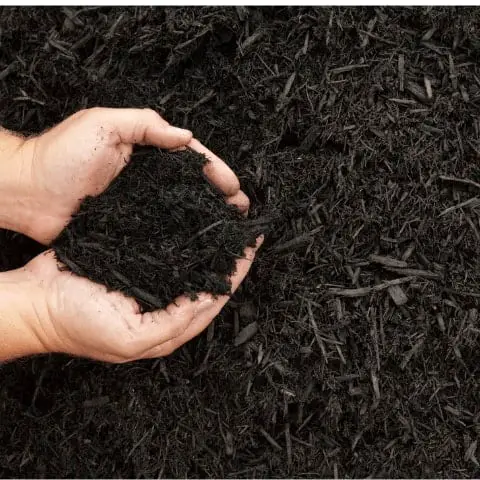If you’re a coffee lover and a gardener, you probably know you can use those old coffee grounds in your garden. However, sources vary when it comes to how to use your coffee grounds. Are they healthy fertilizers for all plants? Can you plant seeds in used coffee grounds?
It’s not a good idea to plant seeds in used coffee grounds because the acidity of the caffeine can stunt growth and kill more fragile plants. Water also can’t penetrate the grounds to reach plant roots. However, they’re excellent fertilizers. You can mix them with potting soil to help plants thrive.
In the rest of this article, I’ll discuss why you shouldn’t plant seeds in coffee grounds. I’ll also talk about healthy ways to use coffee grounds in your garden without hurting your plants and the ideal makeup of natural, do-it-yourself compost containing coffee grounds.
Can You Plant Seeds in Coffee Grounds?
Coffee grounds are helpful in the garden, but you shouldn’t use them to plant new seeds as the caffeine can stunt plant growth and even kill seedlings. The grounds also clump together and prevent water from reaching the plant roots unless they’re mixed well. If you plant your seeds directly in coffee grounds, you risk preventing any growth at all.
Although you shouldn’t plant seeds in coffee grounds, there are several other ways to use coffee grounds in the garden. With a proper mix of nitrogen and carbon-based nutrients, you can use coffee grounds in compost, mulch, and fertilizer. Also, certain plants thrive in soil enhanced by coffee grounds.
Can I Use Coffee Grounds as a Planting Medium?
Coffee grounds aren’t an excellent planting medium, but when mixed with another medium, they can fertilize new plants. If you add some coffee grounds to regular potting soil, the extra nitrogen can help the plants thrive. However, planting seeds in unmixed coffee grounds isn’t advisable.
Coffee grounds are good for plants as long as they are tempered with other nutrients. You also need something to balance the extra nitrogen and acidity—e.g., carbon. Otherwise, the plants can be stunted and even wither. A plant requires a delicate balance of acidic and basic nutrients, and coffee grounds can only provide the first half.
What Nutrients Are in Spent Coffee Grounds?
Coffee grounds are rich in nitrogen, an essential nutrient for plant growth. They also have potassium and phosphorus and biodegrade naturally. Unwashed coffee grounds are acidic and will alter the pH balance of your soil. Spent coffee grounds, however, are pH neutral (this is important to remember when you are tempering the soil).
Coffee grounds provide the acidic nutrients for plants, but not all of the essential ones; you need to balance coffee grounds with other nutrient-providing additives. For this, you can use fertilizers with carbon added, plant extra grass around your seedlings, or use a wood chip mulch. Mulch is the most advisable, as it will naturally provide the carbon without choking out your seedling with other plants. If not sure about the acidity of the soil, a soil tester might help.
How Can I Use Coffee Grounds in the Garden?
There are several ways to use coffee grounds in your garden. You can use them as fertilizer and mulch when mixed with carbon. Compost is a magic worker in the garden, and coffee grounds add vital nutrients to any compost mix. They help suppress disease in certain plants as well.

Some gardeners say that coffee grounds are a good pesticide.
Coffee grounds can be used as a natural repellent against slugs and certain types of ants. All you need to do is to sprinkle it on the ground, around the base of the plants. Slugs cannot bear the smell nor contact with coffee grounds, which are highly toxic for them.
Caffeine interferes with the growth and behavior of many insects and their larvae; in fact, in contact with caffeine they show signs of confusion, they lose coordination until they die.
Coffee grounds are an effective repellent especially for mosquitoes.
Be very careful if you also have pets: coffee grounds can hurt dogs. The caffeine in the coffee bean itself is dangerous to dogs, much in the same way chocolate is. If you have an especially curious dog, be extra cautious when fertilizing your garden – you also don’t want them tearing up your freshly planted seedlings in search of a snack.
Many local coffee shops offer their used grounds to local gardeners, and Starbucks started a coffee grounds recycling initiative several years ago—only available where state and local ordinances allow. So, you don’t have to drink more coffee to have enough grounds for your garden. You can ask your local shops or Starbucks for spare grounds.
Fertilizer
Coffee grounds work very well as fertilizer, especially if they’re combined with carbon-based compost or fertilizer. They’re slow-releasing, which means the fertilizer will last longer and work more effectively, giving the plant all the nutrients it needs over a longer period.
To use unmixed coffee grounds as fertilizer, you can work them into the soil around the plant. Rake the grounds through the dirt for a few inches. You can also use diluted liquid coffee as fertilizer. This is especially useful if you have indoor plants and don’t want to waste your unfinished cup of coffee.
Mulch
Mulch is a great way to reduce weeds in your flower beds and allow your plants to absorb more nutrients and extra water. It keeps the water from draining away and adds more minerals to the soil around the plants. With good mulch, your plants will be healthier, and you’ll have to water them less. If your soil is sandier than usual, mulch will also help your plants grow and lock their roots better.

To make mulch with coffee grounds, you’ll have to find a good mix-in. Since coffee grounds clump and block water, mixing them with another organic fertilizer will keep your plants healthy and let them receive enough water. An ideal mix-in would be compost, manure, or leaf mold.
Compost
Compost is helpful for plant growth. Turning your kitchen scraps into compost is excellent for the environment and your garden. If you set up a compost heap or box, it can be ready to spread in your garden in six to eight weeks. You need more than just coffee grounds to make compost, obviously, but they can make a great addition to your batch.
Compost for gardening should consist of two different types of materials: green and brown. Good compost is one-third green and two-thirds brown. Despite their natural color, coffee grounds are considered green compost material because of their high nitrogen content.
Brown compost refers to carbon-based materials, such as wood chips, cardboard, straw or hay, decomposed paper, pine needles, and sawdust. Besides coffee grounds, green compost ingredients include coffee grounds, grass clippings, eggshells, grass or plant clippings, animal manure, or vegetables.
What Plants Work Best With Coffee Grounds?
Although coffee grounds can work as mulch or fertilizers for almost all plants, certain plants thrive exceptionally well in soil enhanced with coffee grounds. Some flowers, vegetables, and fruits love extra ground acidity and need more nitrogen than others. These plants grow better with coffee grounds in the soil:
- Blueberry bushes
- Carrots
- Roses
- Tomatoes
- Azaleas
- Peppers
- Sweet Potatoes
- Lily of the Valley
- Strawberries
- Parsley
- Radishes
- Gooseberries
All of these plants love the acidic and nitrogen-rich environment that coffee grounds create. Specifically for blueberry bushes and azaleas, unused coffee grounds would be better because they thrive in very acidic soil conditions. The other plants work well with washed or unwashed grounds.
Final Thoughts
Although you shouldn’t plant seeds in coffee grounds, there are still multiple ways to use them in your garden. You can use your old coffee as fertilizer, mulch, or compost to help your plants grow. Plus, you’ll reduce your household waste. So, keep drinking coffee and gardening—it’ll help the environment as well as your plants.
Some of the links above are affiliate links, meaning, at no additional cost to you, I will earn a commission if you click through and make a purchase.

